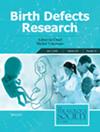Integrated Transcriptomic and Metabolomic Profiling of the Placenta in a Dexamethasone-Induced Cleft Palate Rabbit Model
Abstract
Background
Cleft palate is a congenital malformation influenced by both genetic and environmental factors. Although environmental contributors have been extensively studied, the placenta—an essential organ that mediates maternal–fetal interactions and offers protection against environmental insults—remains poorly understood in this context. This study aimed to explore transcriptomic and metabolomic alterations in the placenta following maternal exposure to corticosteroids, using a dexamethasone-induced cleft palate rabbit model.
Methods
Untargeted metabolomics and transcriptomics analyses were conducted on placental and amniotic fluid samples from fetuses with and without dexamethasone-induced cleft palate. Histopathological examination was performed to assess structural abnormalities in the placenta.
Results
The cleft palate group exhibited marked placental pathologies, including fibrosis, calcification, and necrosis. Transcriptomic analysis identified 4744 differentially expressed genes, enriched in pathways related to hormone signaling, vascular development, and inflammation. Metabolomic profiling revealed significant changes in both placenta and amniotic fluid, especially in the urea cycle, aspartate metabolism, and nicotinate and nicotinamide metabolism. The urea cycle was particularly disrupted in the cleft palate group.
Conclusion
These findings reveal a strong association between placental structural and functional abnormalities and cleft palate formation in the dexamethasone-induced model, offering novel insights into the potential role of the placenta in cleft palate pathogenesis.

 求助内容:
求助内容: 应助结果提醒方式:
应助结果提醒方式:


